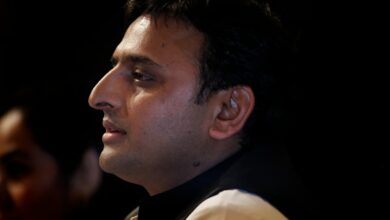Indians: Are They Getting Sicker? Study Signals Startling Pre-Diabetes, Blood Pressure, Cholesterol, and Obesity Numbers
According to a recent research, India has a far greater incidence of metabolic non-communicable illnesses (NCDs) like diabetes than was previously thought.
The startling research on Indians’ declining health indicators has shown the prevalence of metabolic illnesses including diabetes, hypertension, central obesity or stomach fat, and high cholesterol.
The Madras Diabetes Research Foundation, in partnership with the Indian Council of Medical Research (ICMR) and the Union Health Ministry, undertook the research, which was billed as the “first comprehensive study, covering all states of India,” to determine the prevalence of NCDs in the nation.
While the diabetes pandemic is stabilizing in the nation’s more developed states, it is still rising in the majority of other states, according to a study published in the journal The Lancet Diabetes & Endocrinology.
The “Metabolic Non-Communicable Health Report of India-the ICMR-INDIAB National Cross-sectional Study” research discovered that 11.4% of Indians had diabetes, while 35.5% have hypertension.
As a result, the report said that “there are grave implications for the country, necessitating urgent state-specific policies and interventions to stop the rapidly spreading epidemic of metabolic NCDs in India.”
Another concerning development is the rising prevalence of prediabetes, which is a condition where blood sugar levels are high but not high enough to be classified as Type 2 diabetes, with 15.3% of the population now suffering from it. It demonstrates that in India, pre-diabetics outnumber diabetics.
The research found that 81.2% of participants had dyslipidaemia, or abnormally increased cholesterol or lipids in the blood, and that more than 28% had generalized obesity, almost 40% had abdominal obesity, and all of these indicators indicated the predominance of cardio-metabolic risk factors.
“The diabetes pandemic is stabilizing in the nation’s more developed states, but it is still growing in the majority of other states. In order to stop the fast spreading pandemic of metabolic NCDs in India, urgent state-specific policies and interventions are required, according to the study’s authors.
THE STUDY’S METHOD OF CONDUCT
The study’s findings are based on a survey of 1,13,043 individuals, including 33,537 urban and 79,506 rural citizens, who were spread over 31 states and Union Territories between 2008 and 2020.
According to the most recent National Family Health Survey-5 for the years 2019–2021, hypertension affected 21% of women and 24% of men over the age of 15. It also revealed that among those aged 15 to 49, 6.4% of women and 4% of males were obese.
According to the report, there are 101 million diabetics and 136 million pre-diabetics in the nation as a whole. According to estimates from the World Health Organization, India now has an estimated 7.7 crore diabetics.
COUNT BY STATE
According to the report, Sikkim and Goa have the highest rates of prediabetes and diabetes, respectively, while Puducherry has the greatest incidence of obesity.
There was minimal difference between urban and rural areas in the incidence of hypertriglyceridemia and low HDL cholesterol.
The largest frequency was seen in the northern area, Kerala, and Goa, although hypercholesterolaemia and high LDL cholesterol exhibited extensive interstate and interregional heterogeneity. More than 50% of the population in Kerala were found to have elevated cholesterol, according to the study.
All of India’s regions had high rates of abdominal obesity, and the south was the region with the highest rates of overall obesity, followed by the north and east. According to the report, the prevalence of diabetes is lower in the central and northeastern areas.







